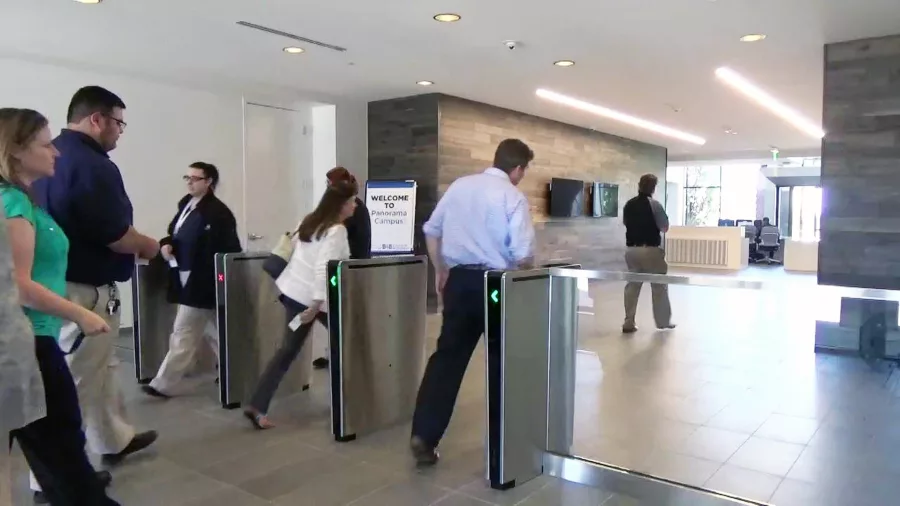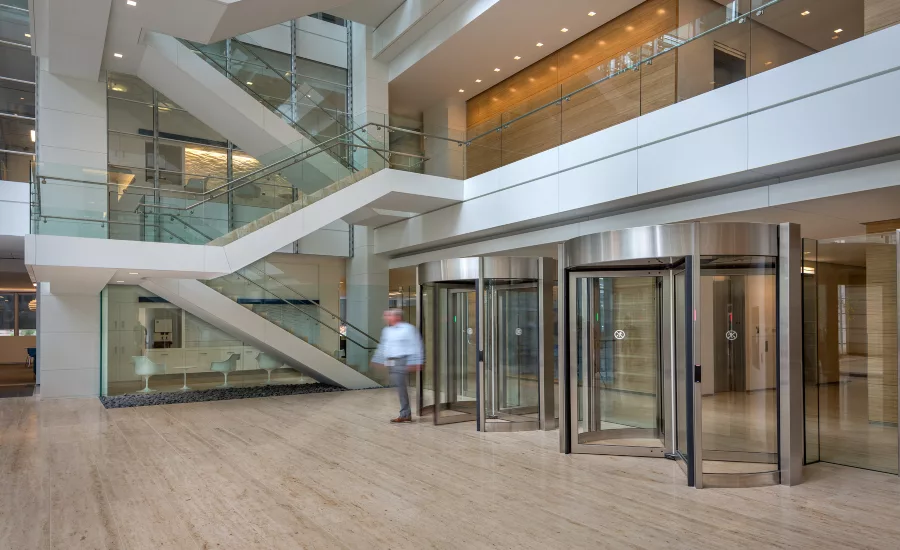Security Entrances: Tales from the Road and Lessons Learned


Photo courtesy of Boon Edam


Nothing beats experience in the field for understanding the various ways a security entrance installation can go wrong. Here are some of our own tales from the road – read on, and discover what not to do when deploying security entrances.
Don’t install a “practice” solution
It may seem like a good idea to give your personnel a lower security option to get used to the idea of new physical security measures at your facility. With this in mind, security enterprises install barrier-free optical turnstiles in an attempt to ease their employees’ eventual transition to optical turnstiles with swinging or sliding barriers. However, this backfires because the employees do not learn to use their credentials correctly; they simply walk through the barrier-free lanes without badging in and wave to the guards when they forgot their credentials. After two years, enterprises usually install the optical turnstiles they wanted in the first place, costing them much more money – and they still have to go through the transitional period of helping their personnel learn to adjust to the new turnstiles.
Lesson: Deploy the solution that is right for your application the first time, and provide proper training and orientation for your personnel so that they will be prepared for the change.
Don’t deploy a partial solution
It may be surprising, but we’ve seen a number of enterprises install a set of turnstiles and then leave a wide gap at one or both ends of the row. Typically, this happens because the organization intends to build a wall or put up filler rail in that area. However, in reality it is not unusual to find several months later that they have simply placed a potted plant in the gap. Even though this is an obvious security shortfall, due to inertia it may stay that way forever. Leaving an open gap around security entrances defeats the purpose of installing them in the first place. There is no reason to allocate budget towards security if you aren’t going to fully follow through on your program.
Lesson: Make sure you have your entire plan in place before installing security entrances.
Don’t mistake one type of problem for another
We have come across several organizations who did not recognize that tailgating and piggybacking are two different things and may require different solutions. With tailgating, one or more individuals follow a credentialed person through an access point, either without their knowledge or without their consent. With piggybacking, the authorized and non-authorized individuals cross as a team, with intent. Depending on the need and application, the recommended product may not be the same for one as for the other. For example, a full height turnstile rotates just enough to let one user through and then the arms lock so that the tailgater can’t enter. But, two slender people could squeeze together into the same compartment (piggybacking) to get in. Each entrance handles things a little differently.
Lesson: Understand the goal of your installation so that you can make the right product decisions.
Don’t make purchase decisions before understanding the technology
It’s not unusual for an organization to make the assumption that turnstiles will be a better choice than a security revolving door. They may consider the doors to be more limiting, slower or more expensive. In some instances, that would certainly be true. However, there are numerous situations in which that would be an incorrect assumption. There is significant long-term ROI associated with security revolving doors. Because these doors prevent unauthorized entry, they do not require manned supervision, allowing guard positions to be eliminated or reallocated throughout the building. Security revolving doors also enable an automatic lockdown of the perimeter in the event of an emergency – something you cannot do with turnstiles.
Lesson: Work with your integrator or trusted manufacturer to discover and deploy the best technology for the needs of your installation.
Don’t expect others to successfully adopt new technology that you don’t know how to use
We’ve seen this a number of times – some security managers go through the entire process of analyzing their needs, evaluating providers, getting approval for expenditures, purchasing and installing security entrances – without fully understanding how to use the new technology. You may have made the very best choice for your application, but you cannot expect your new solution to be successful if your personnel do not understand how they are meant to use it. Your provider should supply user orientation materials to help coach and prepare your stakeholders and employees before installation, and follow through with training once the installation is complete to help ensure the organization gains the maximum ROI from the new security entrances.
Lesson: Take the time to completely understand the operational details and plan user training and support before your deployment.
Security entrances are a significant investment that can greatly improve the overall security for a facility or campus. In order to get the most from them, it’s important to understand some of the things that can go wrong and how to avoid them. Work with your trusted manufacturer and your expert installer to make the right choices and lay the groundwork for a fully successful installation.
Looking for a reprint of this article?
From high-res PDFs to custom plaques, order your copy today!





